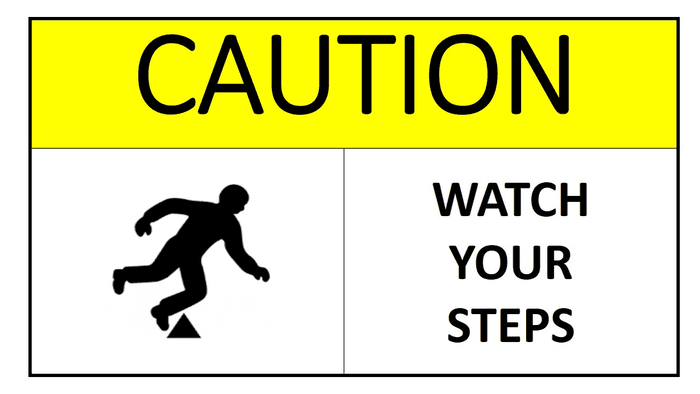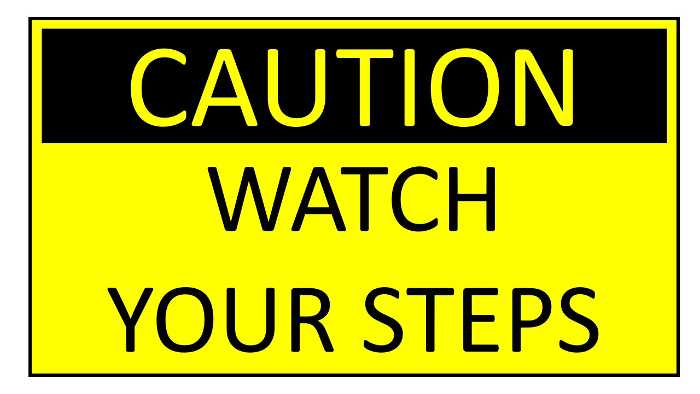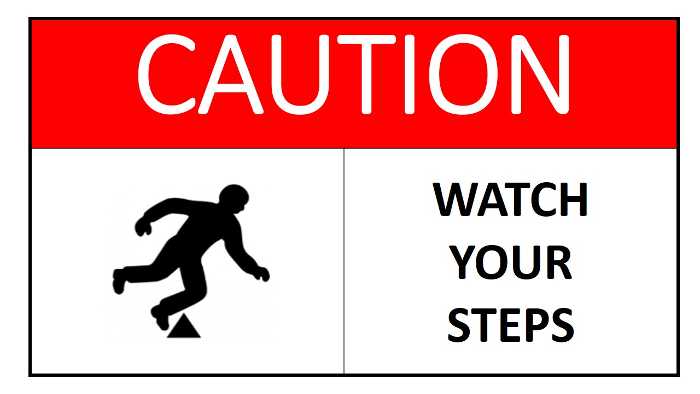Watch Your Steps: We have talked about many things in the past regarding specific safety issues, today we are going to talk about a very general one, which is: "watch your steps". This is one of the simplest issues and has nothing to do with things other than looking where you walk.
It seems like a silly thing. We have all been walking since we were little, since when we were a year old or something like that. We had our share of bumps and slips while we were learning.
Of course, by this time we all think we know how to walk. But there are a surprising number of people who are injured while walking. They slip, they trip, they get tangled up, they step on things, and they walk just like children as they are learning.
It should not be like that. There is no reason for us to have walking accidents, yet they do happen. It is convenient, then, that we see some simple rules, of common sense, to walk safely.
Be proactive to watch your steps
Make sure there is no water, oil or other liquids on the floor. If you see spilt fuel, oil, or grease, walk around. If for any reason you get stepped on, wipe the soles of your shoes, then clean the stain so the next person doesn't break their neck in a somersault!
Be particularly careful in the showers, where the floors are always wet, tread carefully and don't leave soap on the floor. Notice the defective floors. Look for raised boards, protruding nails or stones, bolts or screws in the floor and loose tiles.
Floors should always be free of all these hazards in the first place, but someone can slip, so report unsafe conditions, correct them if you can, and…watch your steps.
Look at the objects lying on the ground. Pieces of pipe, wire, bolts, tools, empty boxes, etc. are always found in walkways and become serious trip hazards. Avoid them and pick them up so others don't trip. Do not kick them anywhere else, because they will surely get in the way there. Throw them in the trash.
Watch your steps carefully
Turn slowly in the corners. This advice is valid not only for drivers but also for pedestrians. One never knows who is coming or who is going the other way: a person with a wheelbarrow, someone with a pipe, etc. Slow down and avoid a crash.
Be careful on the stairs, going up or down. Use the handrail so you can grab something if you trip. Walk slowly. Do not carry objects that impede your vision. If an object is too big, too heavy, or too bulky to carry comfortably, get help carrying it up or down the stairs.
For more health and safety-related topic, click here
Always walk in the safe access. Shortcuts from one corridor to another are always obstructed by machinery and stored material. If you are not in trouble, you can at least interfere with the people who are working. Observe the safety signage and when they tell you not to go through there, it is because there is some danger. These signage are placed for your protection.
When working near suspended loads, keep your eyes open to see where the load is going and where you are going too. The danger exists above and below, so be double careful.
Watch your steps when working near pits, excavations, holes, and unloading docks. A fall here is more dangerous because there is a greater depth before hitting bottom. Do not jump from one level to another, this can cause serious knee or ankle injury.
Above all, walk…don't run. The speed limit allowed here is that of a brisk pace. Going faster is not breaking the rules but the old thing about accidents happening when trying to save a few seconds. The company does not need to save that kind of time that can cause the absence of a worker for a month, a week or even a day.
As you can see, there is nothing technical or complicated about walking safely. I have not said anything that you do not know. This has only been a reminder "Watch your steps".
Conclusion
Slips, trips, and falls are the leading cause of not watching your steps leading to accidents and general workplace injuries, ranging from minor bruises to major trauma such as head injuries, broken bones, sprains, and lacerations. To reduce the potential hazards that lead to slips, trips, and falls, there are ways to watch your steps.
Using safe access and proper housekeeping can help reduce the chances of a slip, trip or fall. Slips, trips and falls can often be attributed to carelessness or clumsiness, the good news is that most accidents are preventable. It is essential to watch your steps to avoid slip, trip and fall problems.
Related toolbox talk
Slip, Trip and Falls toolbox talk
Watch your steps safety signage
 |
| Watch Your Steps |
 |
| Watch Your Steps |
 |
| Watch Your Steps |
 |
| Watch Your Steps |


